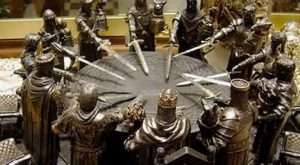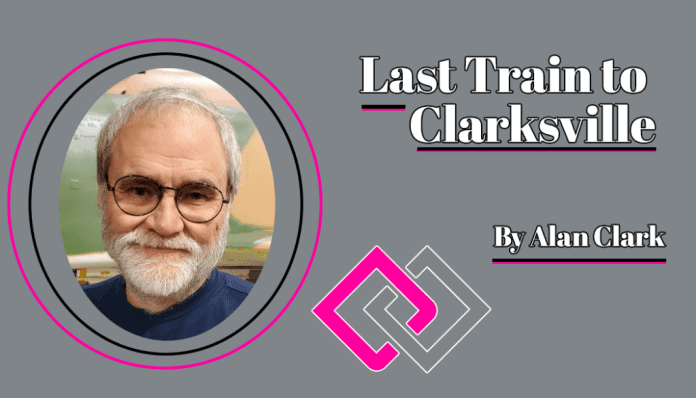Many of us look for heroes in life. And it appears that our human need or drive to find and celebrate these heroes is universal.
Growing up in Greenville in the 50s and 60s was somewhat idyllic. During my tenure as a Greenvillian, I felt quite safe and secure. No one was shot or murdered during my G-ville experience. Houses rarely, if ever, were broken into. Banks were not robbed. There were no muggings, and cars were not stolen; dad always left his keys in the ignition the entire time I called Greenville home. That way he always knew where they were. Feeling safe growing up is a gift because a significant number of people grew up feeling unsafe.
But as a kid, I viewed safety as a hindrance to the full expression of my being. At the soul level, I’m ornery, by nature. I thus found growing up in Greenville to be both quaint and peaceful to such a degree that I got bored. It seems that I need action heroes in my life to inspire me, guys or gals I want to be like. I used my heroes as guideposts and inspirational beings to help motivate me to accomplish tasks outside of my comfort zone.
I picked my heroes based on different criteria – my protagonists needed to be intelligent doers. They also needed to be sympathetic and empathetic to the needs of others. I wanted my heroes to make a positive contribution to society. And I wanted them to stand out in such a way that they could/can inspire others to follow their lead.
But there is still one characteristic I have yet to mention – Bravery. My heroes must be brave, very much so. My heroes must be so brave that they are willing to die for me and you.
 In my early youth, I was drawn to Knights who fought and died for their convictions. The crusades created men who ostensibly cared about the downtrodden. Some knights who fought in the crusades, however, did so based on their desire to loot and steal from those they killed. But in the spirit of the Knights of the Roundtable, I admired Knights as the champions of good, and the defenders against evil.
In my early youth, I was drawn to Knights who fought and died for their convictions. The crusades created men who ostensibly cared about the downtrodden. Some knights who fought in the crusades, however, did so based on their desire to loot and steal from those they killed. But in the spirit of the Knights of the Roundtable, I admired Knights as the champions of good, and the defenders against evil.
My obsession for Knights waned over time as I learned more about the crusades. But my desire to seek out and admire these somewhat fictitious depictions of Knights never left me.
Sometime during my high school career, I discovered a more realistic hero, someone who demonstrated or epitomized selflessness and bravery in the face of danger, all for a higher good.
The guys and gals I’m speaking of are my new Knights of the Roundtable and they are –
The American Fighter Pilot.
As the crew chief of the F4 Phantom D fighter jet , I had the opportunity to both work with fighter pilots and to drink and relax with them, as well. I listened with rapt attention whenever they told tales of air-to-air combat with either a Mig 17 or a Mig 21 (both were Russian jets).
Whenever an F4 took off for a bombing mission, the pilot knew it may be his last. We lost nearly 700 F4s during the Viet Nan “conflict.”
The McDonnell Douglas F4 Phantom was the original Top Gun Fighter jet. The legend of America’s most celebrated jet fighter still lives on today. The F-4 Phantom (referred to by the North Vietnamese as the Phantom Menace) was the United States’ primary air superiority fighter during the Vietnam war. And the F4 epitomized American airpower doctrine during the early days of our Cold War, with the Rewskies.
Okay, so you get the picture, right? The F4 Phantom II jet fighter/bomber was the meanest, badass and most feared plane in the air during the year I served in the war. But its pilots were even nastier than the planes they flew.
This post is meant to honor the American fighter pilot. An F4 Vietnam jet fighter pilot typically stood six feet tall or taller. He possessed 20/20 vision (uncorrected). And for some strange reason (one I have yet to figure out) they were mostly all really good looking. And their minds were razor sharp. The best pilots graduating from flight school were assigned to fighter jets – the rest went on to become cargo or bomber pilots. Today’s cost for training a fighter pilot is roughly 20 million dollars. And the cost of training an F4 pilot would have been proportional to today’s cost.
But the heart and soul of this essay is about the incredible bravery of an F4 pilot. The pilots I worked with were all highly gifted men, and if they could survive the war, they would no doubt be successful in whatever endeavor they pursued after their discharge.
However, that was the furthest thing from their minds. All they cared about was the mission at hand, that day. Fighter pilots from the Vietnam era were fearless. They were gladiators in the sky, fighting to the death. One on one ariel combat, normally ended with a downed plane and a dead pilot.
I’d like to end this essay with a story. During a gathering amongst the crew chiefs and their pilots (in the barrack’s bar) I once asked a pilot what his thoughts were prior to takeoff. And I’ll never forget his answer. He said – “chief, I don’t think about dying or losing a dog fight when I’m in the air. I know I have a superior aircraft and my training was second to none. Every encounter I have with the enemy, I assume I will prevail and that’s exactly what I have done to date and will continue to do so. I don’t fear death, chief. I don’t think there is a plane in the sky that can kill me but if that happens, well, then it happens.”
I went back to my bunk that night thinking that I didn’t have what it takes to be a jet fighter jock. I’m not that brave, but they were, and I idolized them for it and still do. They were members of some of the bravest warriors of the Vietnam period. Air to air combat (via dog fights) is mostly a thing of the past. Today’s jets fight primarily with air-to-air missiles fired from several miles away. So, the days of the dog fight are mostly behind us. But I had a chance to live those days with the pilots and those days were priceless.






